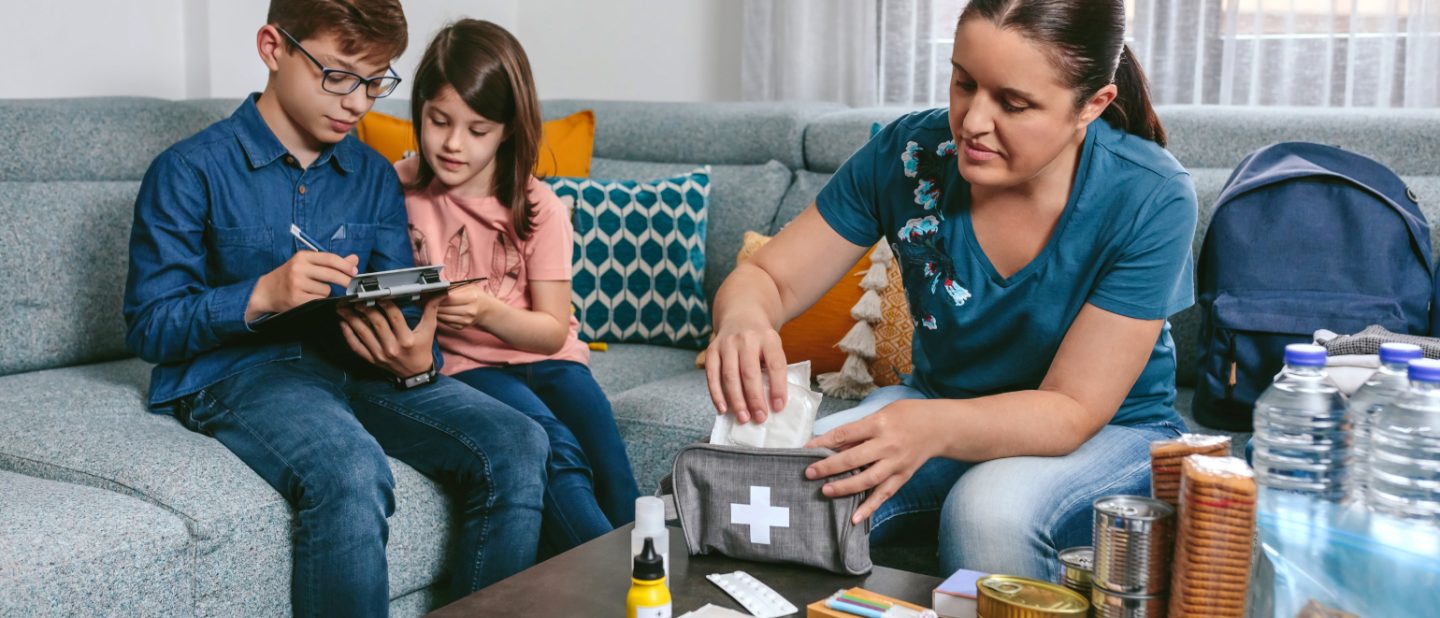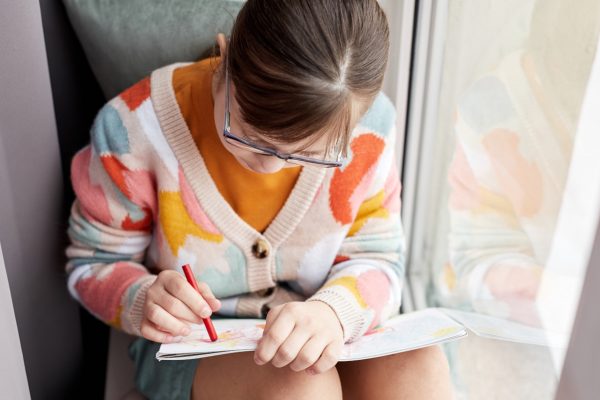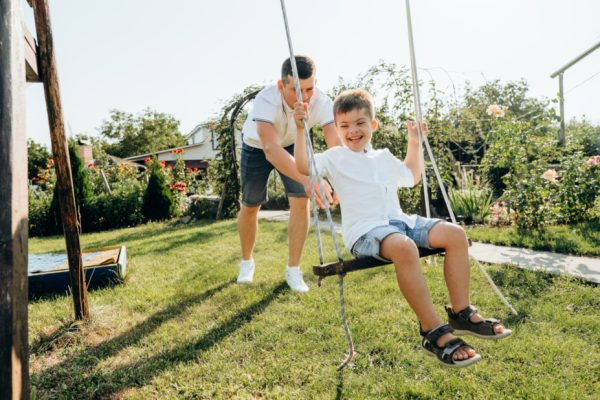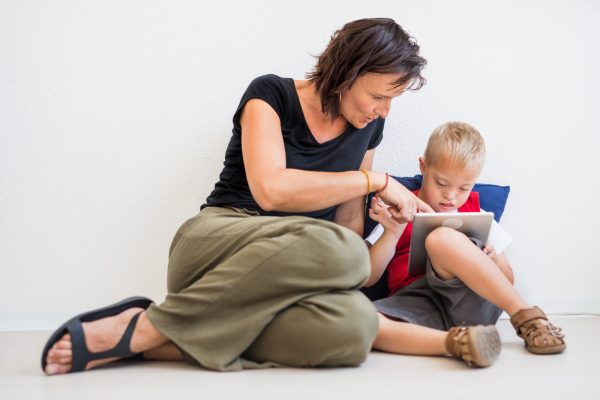
Natural disaster preparation: children and teenagers with disability, autism or additional needs
Natural disasters like bushfires, floods or cyclones can happen quickly and without warning. Planning and being prepared can help you respond quickly and calmly.
Planning is particularly important if you have a child with disability, an autistic child or a child with other additional needs. For example, you might need to think ahead about how to manage your child’s medical, travel or sensory needs during or after an evacuation.
Here are tips to help you plan and prepare for a natural disaster. These tips can help you meet your child’s needs and keep your family safe.
Organising information for natural disasters
If your child has particular health, medical, behavioural, mobility or other additional needs, you probably have a lot of paperwork and other information. It’s a good idea to keep all this information together so you can pack it quickly and take it with you in a natural disaster. It might help to put the information in a folder or file.
What to put in your information folder
- Your family Medicare card, your health benefits card if you have one, and other important documents
- Your child’s medical plan, including copies of their medical records and assessments, and the names and contact details of their GP, medical specialists and other health professionals
- A list of your child’s medicines (including details of dosage and frequency) or other medical treatments and copies of your child’s prescriptions
- Your child’s NDIS plan, care plan or support plan, if they have one
- The names and contact details of your NDIS providers, occupational therapist, physiotherapist and other health professionals
- Legal documentation that relates to your child, like court orders
- Your child’s individual learning plan (ILP)
- Information about your child to help other people care for them
Information about your child will help other people know how best to connect with and help your child if you get separated. This might include things like whether your child is non-verbal, how they prefer to communicate, how they react to people they don’t know, whether they have sensory issues or whether they’re likely to wander. It might also include tips on helping your child calm down if they’re upset.
Packing an emergency bag for natural disasters
Your child with disability, autistic child or child with other additional needs might have particular items that they need for their health, care, safety and comfort. You’ll need to pack these items into a bag. Keep the bag somewhere you can get to it easily. And make sure you keep any medicines or foods up to date.
What to put in your emergency bag
- Your information folder or file
- An emergency identification bracelet or card with your child’s details and your contact information, which you can remove from the bag and attach to your child
- Medicine – enough for 7-14 days if possible
- Feeding and foods needs – for example, syringes, tubes or special foods if your child has allergies
- Freezer bag and prefrozen ice packs for medicines or foods that need to stay cold
- Hygiene items – for example, nappies, continence pads, wipes, hand sanitiser, special toothbrushes or toothpaste, lotions and creams
- Special clothing – for example, clothes that have been adjusted to fit your child, clothes made of a particular fabric or clothes without tags
- Things that help your child calm down or feel safe – for example, a book, special interest item, headphones or earplugs
- Your child’s preferred communication system, aid or device – for example, a Picture Exchange Communication System (PECS)
- Other electronic devices and assistive technology, including chargers or spare batteries
- Small games, books or toys that don’t need batteries
- Items for service animals – for example, identification, vest or harness, lead, food, water and treats
- Written instructions for using the items in the bag, in case you and your child get separated
- A small electronic tracking device to attach to the emergency bag, if appropriate
If your child is old enough, they might like to pack a separate bag with their special items. It’s important to check that your child has packed everything they’ll need in their bag – for example, a favourite card game or pencils and a sketchbook.
Making a natural disaster action plan
Your child’s health, medical, behavioural, mobility or other additional needs might affect what you do, where you go and what help you need in a natural disaster.
What to think about for your natural disaster action plan
- Your child’s mobility and specialised transport needs – for example, where and how you plan to take shelter in your house, or where and how you plan to evacuate
- Your child’s service animal and how to transport and care for it
- An emergency contact who doesn’t live nearby – a person outside the emergency area who’s familiar with your child’s needs and who family members and support people can contact if you and your child get separated
Your action plan might also include general things like where to get up-to-date information about the disaster, who to contact for help, when you’ll evacuate, and what each family member will do if you need to evacuate.
If your child’s condition means they’re likely to need medical attention during a national disaster, speak with your GP about how to plan for this in advance.
Preparing children with disability, autism or other additional needs for natural disasters
The way you prepare your child with disability, autistic child or child with other additional needs for a natural disaster will depend on their age, developmental stage and ability.
You’re best placed to know what your child needs, but these general tips might help.
Help your child learn about natural disasters
You can do this by talking with your child about natural disasters in a way that your child can understand without getting scared. For example, ‘Natural disasters sometimes happen in our area, like when the roads get flooded. If there’s a natural disaster near our house, we all know what to do’.
Include your child in planning
When you make your natural disaster action plan, it’s a good idea to include your child as much as possible. Being involved will help your child understand what’s happening and what they need to do. It will also give your child a sense of control.
As part of your planning, you and your child can look at what to do, what not to do, and who to speak to for help.
Practise taking shelter or evacuating with your child
It might help some children to practise what to do in a natural disaster. For other children, this can cause stress and anxiety.
If you think practising will help your child, you can start by explaining to your child what your family will do in a natural disaster. For example, ‘If the bushfire gets close, we’ll pack the car quickly and drive to the evacuation centre’. Then you can do a practice run of packing and leaving.
As you practise, you can remind your child of why you’re planning and practising. For example, ‘We have a plan to keep everyone safe. We know what to do’.
Attend children’s events run by emergency services
If your local emergency services run children’s events, it’s a great idea to go along if you can.
These events show children what they might see, hear or feel during an emergency but in a fun and relaxed way. They also give children the chance to meet emergency workers in uniform and learn about how emergency workers can help them during a natural disaster.
Visual supports and social stories can help your child learn about what might happen in natural disasters, what to do, and why it’s important to follow instructions. They can also prepare your child for how they might feel. For example, a social story might say, ‘It might feel scary when we leave our house. We can take 10 deep breaths together, and then we’ll get in the car. I’ll put on my headphones and listen to my favourite song’.
This article was originally published on the Raising Children Network website and has been republished with permission.
Raising Children Network provides free, reliable, up-to-date and independent information to help your family grow and thrive together. Designed for busy families and full of practical tips, they have the answers to hundreds of parenting questions, where and when you need them. Raising Children Network is there for you, every step of your parenting journey. Learn more at raisingchildren.net.au







